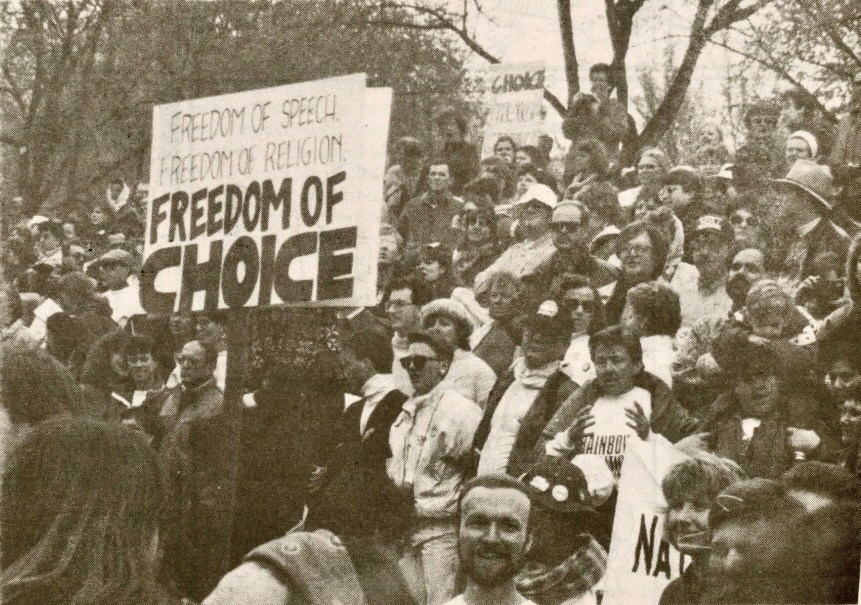This is part of a new feature installment, showcasing the history of both the Bi-College News and the Bi-College community via old publications.
By: Clea Benson BMC ‘91, Editor
Published: Friday, April 14, 1989 in The Bryn Mawr-Haverford College News (Vol. 20, No. 21)
Bryn Mawr and Haverford students, faculty members, and administrators attended the March for Women’s Equality and Women’s Lives held in Washington, D. C. on Sunday, demonstrating their support for American women’s right to safe and legal birth control and abortion. The march, sponsored by the National Organization for Women, was a response to the United States Supreme Court’s decision to hear the Webster vs. Reproductive Health Services case, which could lead to a reconsideration of the 1973 Roe vs. Wade decision legalizing abortion.
“It was really an amazing event,” said Bryn Mawr President Mary Patterson McPherson, who rode on one of the buses provided for students.

Photo by Katy O’Reilly
The Bryn Mawr-Haverford College News (1989)
According to the organizers, more than 600,000 people attended the march. Police reports gave a smaller estimate, saying that the number was closer to 300,000. However, McPherson disagreed with the lower count. “There is no question that there were well, well over 300,000 people there,” she said.
Women and men waving signs bearing pro-choice slogans lined Constitution Avenue for most of the day. The marchers rallied in front of the Capitol building, where prominent feminists and political activists such as Gloria Steinem and Jesse Jackson voiced pro-choice concerns.
Although anti-abortion groups placed four thousand white crosses on the mall to symbolize the number of abortions carried out in the United States each day, there was little interaction between those who opposed the process and those who supported women’s right to choose. “It was such a supportive, congenial, pleasant crowd,” McPherson said.
The march was unconventional in that it attempted to show the Supreme Court that the majority of the public favors protection of abortion rights. Usually, such gatherings are held to sway the votes of legislators who have been elected to represent the concerns of their constituencies. “It’s true that the Supreme Court can’t be making its decision according to what the public feels today,” McPherson said.
She added, however, that “the Supreme Court must take account of where the people are at this point,” and said that she is “optimistic on this issue.”
Bryn Mawr Sophomore and Women’s Center Coordinator Donna Uettwiller was uncertain about the impact of the march but said, “There’s that little bit of hope and that’s why so many Mawrtyrs and Fords went down there.”
Uettwiller added that the march was “not one of the more exciting marches that I’ve ever been to” but attributed this to the nature of the issue. “It’s something that people feel sad about. [Other issues] don’t affect you or your best friend in the same way that abortion does,” she said.
The Webster case focuses on a Missouri law which stipulates that life begins at conception, prohibits the use of public funds for abortion counseling, prevents the use of public hospitals for abortions that are not necessary to save women’s lives, bars public employees from assisting abortions, and requires doctors to test weight and lung development after 20 weeks of pregnancy to see if the fetus could survive outside of the womb.
